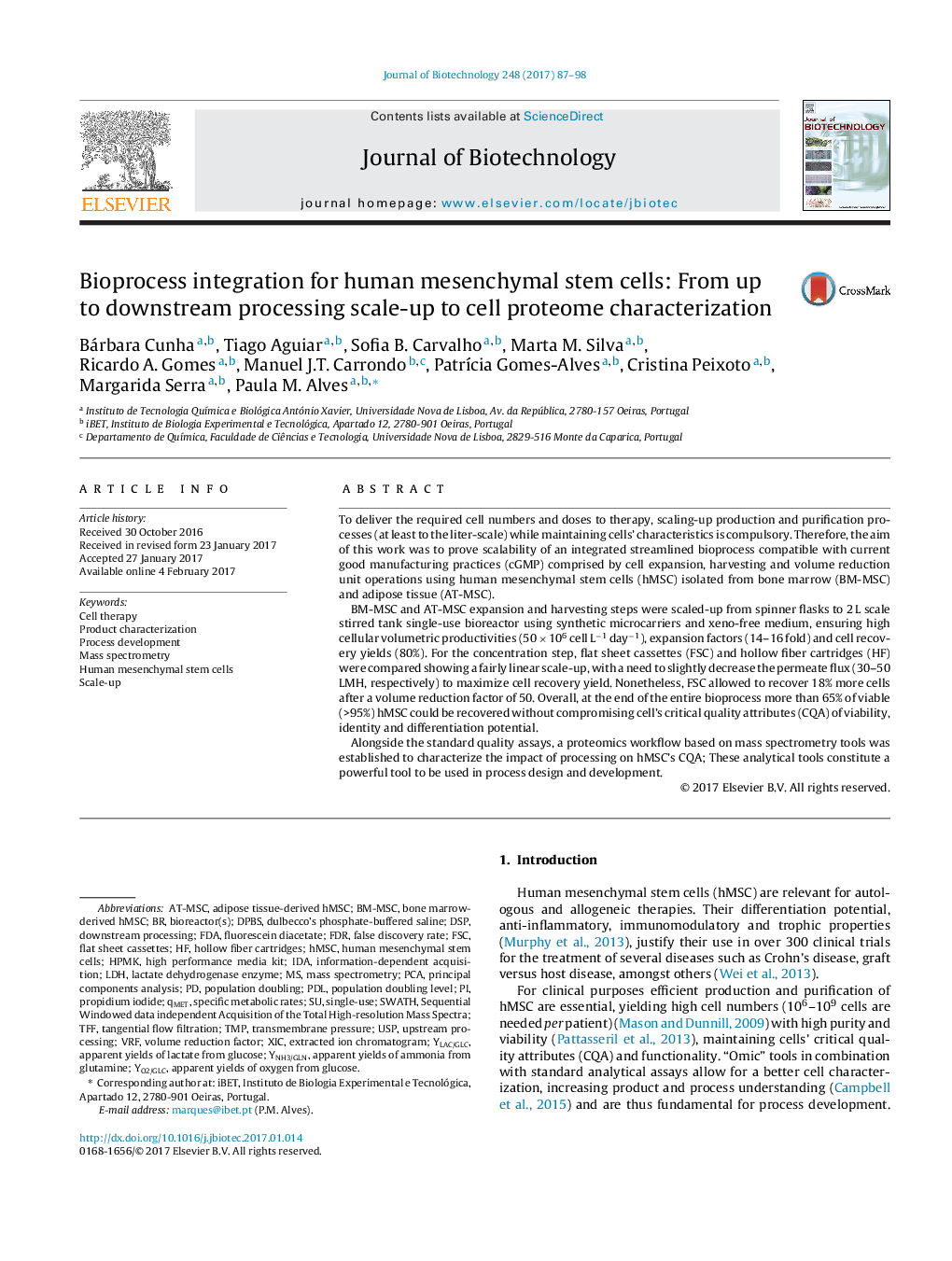| کد مقاله | کد نشریه | سال انتشار | مقاله انگلیسی | نسخه تمام متن |
|---|---|---|---|---|
| 6452132 | 1416996 | 2017 | 12 صفحه PDF | دانلود رایگان |

- Prove scalability of an integrated, robust and closed bioprocess for BM-MSC and AT-MSC using single-use technology.
- hMSC expansion scale-up ensured high cellular volumetric productivities, expansion factors and cell recovery yields after harvesting.
- Flat sheet cassettes allowed to recover 18% more cells (>84%) after a volume reduction factor of 50 than hollow fibers cartridges.
- A proteomics workflow based on mass spectrometry tools was established to characterize the impact of processing on hMSC' CQA.
To deliver the required cell numbers and doses to therapy, scaling-up production and purification processes (at least to the liter-scale) while maintaining cells' characteristics is compulsory. Therefore, the aim of this work was to prove scalability of an integrated streamlined bioprocess compatible with current good manufacturing practices (cGMP) comprised by cell expansion, harvesting and volume reduction unit operations using human mesenchymal stem cells (hMSC) isolated from bone marrow (BM-MSC) and adipose tissue (AT-MSC).BM-MSC and AT-MSC expansion and harvesting steps were scaled-up from spinner flasks to 2 L scale stirred tank single-use bioreactor using synthetic microcarriers and xeno-free medium, ensuring high cellular volumetric productivities (50 Ã 106 cell Lâ1 dayâ1), expansion factors (14-16 fold) and cell recovery yields (80%). For the concentration step, flat sheet cassettes (FSC) and hollow fiber cartridges (HF) were compared showing a fairly linear scale-up, with a need to slightly decrease the permeate flux (30-50 LMH, respectively) to maximize cell recovery yield. Nonetheless, FSC allowed to recover 18% more cells after a volume reduction factor of 50. Overall, at the end of the entire bioprocess more than 65% of viable (>95%) hMSC could be recovered without compromising cell's critical quality attributes (CQA) of viability, identity and differentiation potential.Alongside the standard quality assays, a proteomics workflow based on mass spectrometry tools was established to characterize the impact of processing on hMSC's CQA; These analytical tools constitute a powerful tool to be used in process design and development.
Journal: Journal of Biotechnology - Volume 248, 20 April 2017, Pages 87-98